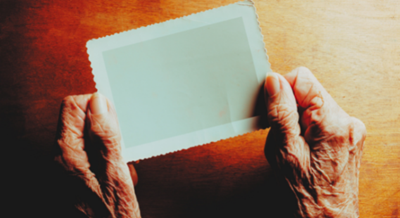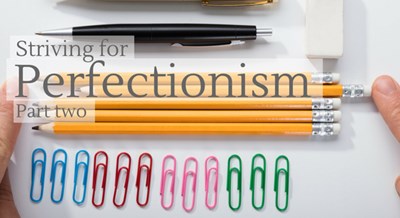
Why do we dream and are our dreams linked to psychology and wellbeing? Our team explores.
From ancient times to the present day, in cultures from the east to the west, our dreams have been recognised as important events. Dreams are still significant today as wellsprings of our culture and our imagination, but also as a route to the understanding of healthy brain processes and our response to psychological stress.
In the last century, the study of dreams was associated with the discovery of the unconscious. Dreams have always been recognised as elements of creativity and problem-solving. Now, they are increasingly understood as essential parts of healthy sleep and an important part of the brain's response to life’s stress and trauma.
Dreams and the unconscious
Dream interpretation was an important facet of the struggle in the first half of the 20th century to gain recognition of the unconscious mind. Major figures like Freud and Jung used the interpretation of dreams to introduce to a hostile world the reality that our mental life contains an unconscious, as well as a conscious awareness.
Today, the existence of the unconscious is universally accepted, but, in Europe, at the turn of the last century, this was not so. The analysis of dreams provided essential data to convince a more rigid society that all was not as it seemed. Today, most people believe their dreams offer at least a potential route to the understanding of their mental life, even if they are not “the royal route to the unconscious” that Freud promised they would become.
Dreams and creativity
It would be foolish for us to deny the significance of dreams in our cultural life. Just as Einstein understood that no element of intelligence is as important as the imagination, there are many examples from mathematics, art, and music, illustrating the importance of healthy dream sleep as a basis for problem-solving, and creativity is often based upon a foundation of dreams.
One popular example is described in the biography of Paul McCartney and the Beatles. It is said that McCartney “composed the entire melody of his most famous song, Yesterday, in a dream one night in his room at the Wimpole Street home of his then girlfriend Jane Asher. Upon waking, he hurried to a piano and played the tune to avoid forgetting it.”
McCartney’s initial concern was that he had subconsciously plagiarised someone else's work. As he put it, "for about a month, I went round to people in the music business and asked them whether they had ever heard it before. Eventually, it became like handing something in to the police. I thought if no-one else claimed it after a few weeks, then I could have it."
As McCartney recalled, "first of all, I checked this melody out, and people said to me, "No, it's lovely, and I'm sure it's all yours". It took me a little while to allow myself to claim it, but then, like a prospector, I finally staked my claim; stuck a little sign on it and said, "Okay, it's mine!". It had no words. I used to call it Scrambled Eggs."
Physiology of dreams and responses to stress and trauma
The discovery of rapid eye movement (REM) sleep by Kleitman and Aserinsky in 1953 brought an unprecedented opportunity to study the activity of the brain during sleep. For the first time, the actual physiology of sleep could be studied.
In REM, sleep episodes of REMs occur which are low-amplitude, fast-frequency bursts of eye movement and are part of a dynamic phase of sleep which is as active as wakefulness. During REM, the body is in a heightened state of mental, physical and sexual arousal; our hearts beat faster; our bodies sweat; but our muscles become completely relaxed and without tone. The phase is sometimes called paradoxical sleep.
Dreaming occurs in non-REM as well as REM sleep, but the dreams of REM sleep are much more vivid and therefore more memorable. Most dreams are brief, lasting between five to 20 minutes. Periods of REM sleep lengthen progressively across the night, with the first episode being shortest, of approximately 10 to 12 minutes duration, and the second and third episodes increasing to 15 to 20 minutes. Near the end of the night, dreams may last as long as 15 minutes. During a typical lifespan, a human being spends one third of life asleep, as much as 30 years for a person living till the age of 90. This equates to a total of about six years spent dreaming (roughly about two hours each night).
The brain chemicals noradrenaline, serotonin and histamine are completely suppressed during REM, and the brain region responsible for logic and planning (the prefrontal cortex) is shut down. At the same time, levels of the stress hormone cortisol are very high.
Psychological resilience is impaired when the REM sleep cycle is disturbed after exposure to stress or trauma. A reduction in the time taken to get to REM sleep (so-called REM latency), as well as a breakup of the episodes of REM (REM sleep fragmentation) and nightmares, all occur during times of great stress. When measured within weeks following exposure to traumatic events, these REM impairments have been associated with an increased risk of developing persistent post-traumatic stress disorders (PTSDs).
Disturbed sleep (REM or non-REM) is linked to poor responses to stress and trauma. However, sleep disturbance represents a modifiable factor for recovery. Sleep restoration can accelerate recovery from trauma exposure and from PTSD.
Common myths about dreams
There are many misunderstandings about our dreams, but here are some of the facts.
“Our dreams are just imagined nonsense with nothing to do with our experience or our senses”
Not so. Dreams are informed by our senses and by our experiences. Interestingly, people who are blind from birth do not have visual content in their dreams, but instead have contents related to their other senses present since birth.
"Dreams are unique and special. No one else has dreams like ours"
Not so: there is good data to suggest that the content of dreams is universal. It seems that people all over the world dream of mostly the same things. Dreams are much more commonly filled with distressing negative emotions than positive ones, and the content generally relates to our personal experiences of the previous day or week. Anxiety is the most common emotion found in our dreams, but other common emotions include fear of abandonment, anger, and, much less frequently, joy.
“We remember our dreams because they teach us important inner truths about our lives”
Not so. Most of our dreams are forgotten, and the recollection of our dreams is notoriously unreliable. The recall of dreams is related to the intensification across the night of the vividness of the dreams imagery, colours, and emotions. Women may be more proficient, as well as those who make an effort to keep a dream record or diary. We are more likely to recall if we are awakened while dreaming, especially if the content is vivid, intense or extremely unusual.
"Dreams are generally about sex"
Not so. In an average night of eight hours sleep, we dream for between two to three hours, and less than 95% of what we dream is ever recalled in wakefulness. Remembered facts are jumbled up, with objects and locations blending into one another often in a bizarre fashion. The content is typically filled with exaggerated details of our recent memories and experiences. Sexual dreams are recalled no more than 10% of the time and most commonly in the young to mid-teens.
A case history
Susan is a bank official. One ordinary Monday morning, she was held at gunpoint in an armed raid at her bank branch. Everyone had remained calm and, in the end, thankfully, no one was hurt. The raiders ran away, leaving Susan and her colleagues in a state of shock.
In the nights that followed, she found it hard to sleep. She kept asking herself questions. “Did I do the right thing? Should I have handled it differently? If I had done things according to procedure might it have turned out better?"
She questioned herself as she lay awake at night, as she tried in vain to put the image of the men with balaclavas out of her head. When she fell asleep, her dreams and her nightmares came quickly, and she relived her experience with vivid horror as though it were happening again and again. Susan began to avoid going to bed and, instead, stayed up later each night, eating snacks and dreading her dreams.
Susan and her husband went to their GP and asked what they should do. Susan said, “if I can’t sleep I won’t be able to work and I won’t be able to care for the children”.
The GP recognised that Susan was going through an acute stress reaction. He was keen to reassure Susan that she would make a full recovery. Like Susan, he recognised the importance of sleep restoration in her recovery plan.
He was reluctant to prescribe a benzodiazepine-type medication. These short-term sleeping agents are effective, but they also shorten and reduce the amount of REM sleep and their withdrawal may be associated with REM problems, such as REM rebound and an abundance of troubling dreams. Benzodiazepine sleeping tablets are also associated with psychological dependence after a very short few weeks of use.
Instead, he encouraged Susan to work with her counsellor and to make a recovery plan based on the restoration of her sleep. The bank was willing to provide an opportunity for confidential, one-to-one counselling, and Susan’s GP encouraged her to take this offer up. Susan took his advice and, together, they took on a practical plan for restoration of sleep. Ultimately, she needed to restore her confidence in her ability to sleep.
She agreed to take regular walks each day. During the day, she would avoid naps as far as possible, and also avoid caffeine and other stimulant drinks. She tried to make her bedroom less warm and yet more comfortable, and she agreed to stop eating food late at night. Susan agreed to go to bed earlier and to change her expectations of sleep. For an hour before sleeping, she would rest without reading or watching television. With her therapist, she learned to practice mindfulness-based relaxation and to rest without agonising about the anticipated night to come.
She agreed that, if she awoke during the night, she would get up and prepare for the day, rather than lie on in bed, hoping for sleep to come. The next evening, she would go to bed when she felt tired, rather than putting the night time off.
As sleep returned, she regained her confidence. In her therapy, she discovered the significance of her trauma and the way it had reawakened for her issues in her past that were previously distressing. Her recovery became a journey in which she rediscovered the basis for many of her strengths and her resilience. Two months after her experience at work, Susan was back working and was neither bitter about her past experience nor fearful about her future.
Susan had recovered.


